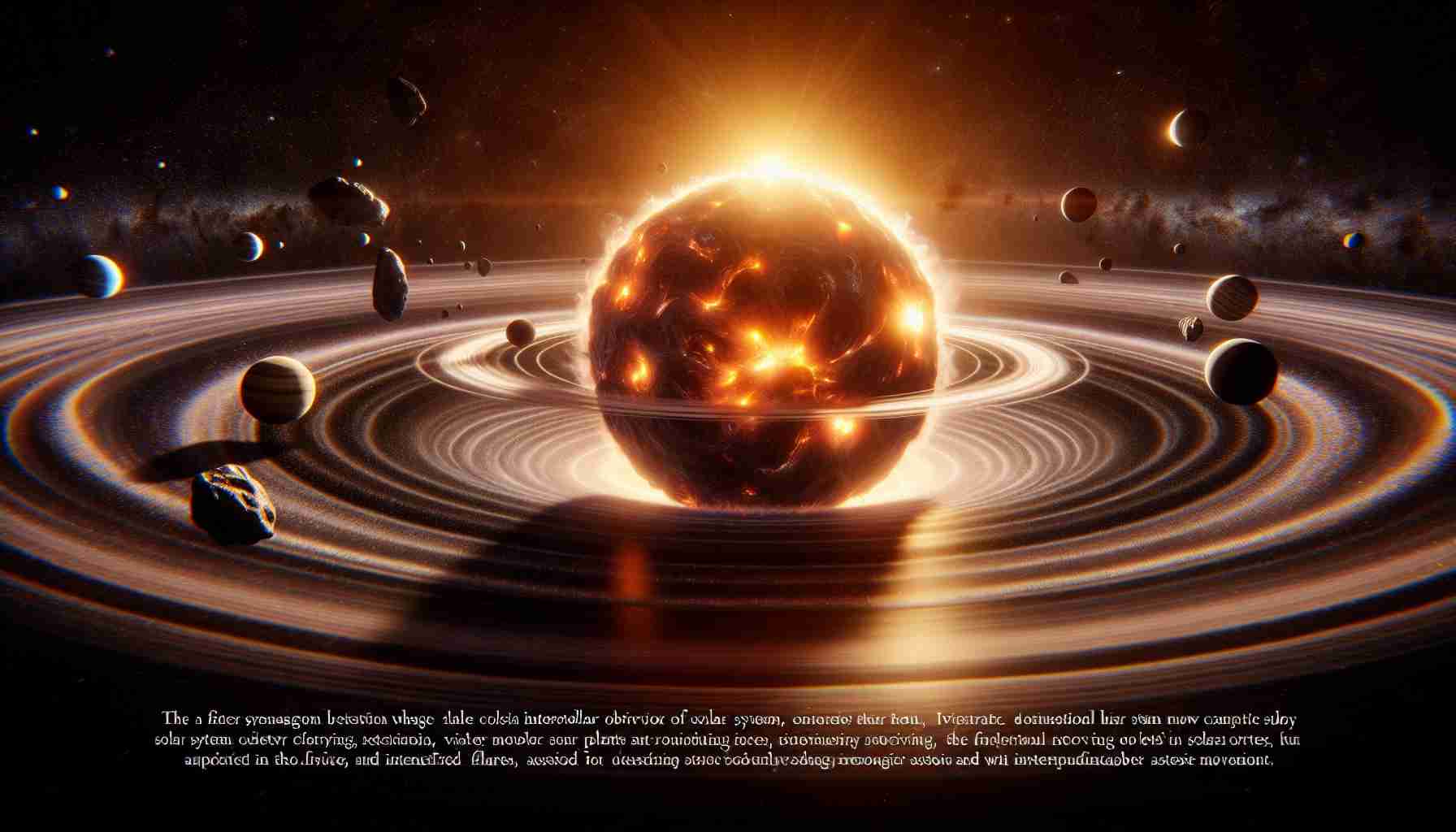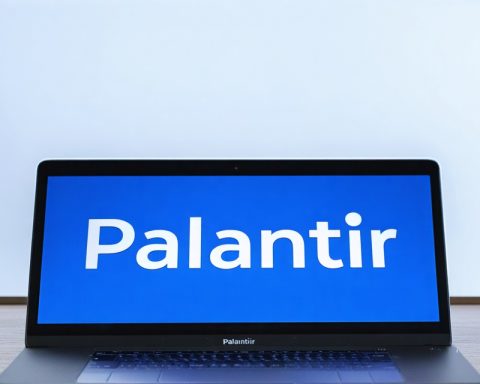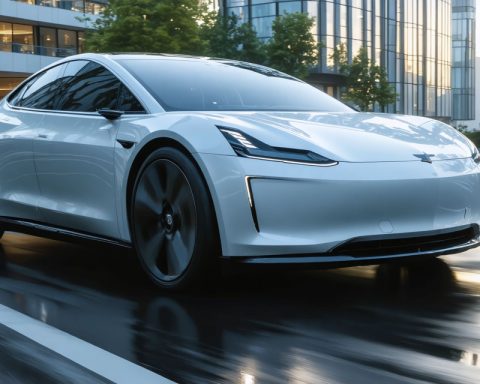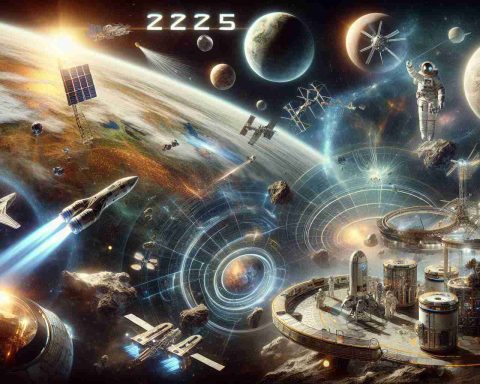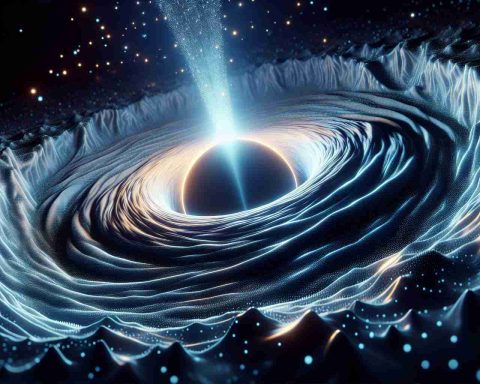The Mystery of Our Planetary Orbits
For eons, the Sun has been the steadfast ruler of our solar system, keeping the planets in line with its massive gravitational pull. All celestial bodies orbit in a uniform plane and direction. Yet, some mysteries linger regarding the strange behaviors of these planetary orbits.
Recent research indicates that an enormous interstellar object, potentially up to 50 times the mass of Jupiter, might be responsible for these anomalies. This idea suggests that external forces, rather than solely internal planetary interactions, could have influenced the current arrangement of our celestial neighborhood.
The birth of the solar system, occurring about 4.6 billion years ago, saw planets forming from a flat disc of gas surrounding the young Sun. Initially, the planets orbited in harmony; however, planetary migrations soon disrupted this order. It was previously believed that these positional changes resulted from gravitational interactions among the planets or the dynamics of the original gas disc.
Still, key eccentricities in the orbits of gas giants like Jupiter, Saturn, Uranus, and Neptune remain puzzling. Researchers propose that a massive object passing close to the solar system could explain the irregularities observed today. Their simulations suggest that a visitor flying within 20 astronomical units of our system could be a plausible explanation, with odds that are surprisingly favorable.
What exactly this interstellar intruder might be remains uncertain, hinting at the possibility of a rogue gas giant wandering from its system into ours.
The Enigmatic Forces Shaping Our Solar System’s Orbits
Understanding Planetary Orbits and Their Peculiarities
The harmonious dance of the planets around the Sun has fascinated astronomers for centuries, but recent studies have unveiled more about the gravitational mechanics that govern these celestial paths. While the Sun undoubtedly exerts a commanding force, scientists suggest that there may be other significant influences at play, particularly from massive interstellar bodies.
The Role of External Forces
Recent hypotheses put forth by researchers propose that an enormous interstellar object with a mass potentially 50 times that of Jupiter may be responsible for the strange dynamics observed in planetary orbits. While traditional models focused on internal interactions within the solar system, this new perspective incorporates external gravitational influences, making a compelling case for the presence of a rogue gas giant that has wandered into our cosmic neighborhood.
Implications of Planetary Migrations
The orbital mechanics of our planets have undergone significant alterations since their formation roughly 4.6 billion years ago. Initially, they were formed from a flat disc of gas and dust, leading to relatively stable orbits. However, as planets began to interact gravitationally, migrations occurred, resulting in the peculiar configurations we observe today.
This migration theory is not new but has seen renewed interest as researchers explore the possibility that an outside force, like a passing star or massive object, contributed to these rearrangements. Such interactions could explain the eccentricities observed particularly among the gas giants—Jupiter, Saturn, Uranus, and Neptune—whose orbits defy simple predictions.
The Search for Interstellar Intruders
Simulations have suggested that an object approaching within 20 astronomical units of the solar system could significantly affect planetary orbits. This presents a tantalizing prospect for astronomers, hinting at the possibility of gas giants or even other massive bodies passing through our solar system.
The concept of “rogue planets” or “intruder celestial bodies” continues to gain traction within the scientific community. These bodies, stripped from their systems or ejected by their massive hosts, might traverse immense distances across the galaxy, occasionally venturing close enough to influence the gravitational ballet of our solar system.
Future Perspectives and Research Directions
As we turn our telescopes and simulations towards the heavens, several questions remain unanswered:
1. What constitutes these rogue objects, and how do they maintain their trajectory across the galaxy?
2. What technology advancements are necessary to detect these distant interstellar bodies before they reach our solar system?
3. Can we model other dynamic interactions accurately within the solar system’s evolving framework?
The continuous study of these phenomena not only enhances our understanding of our own solar system but may also reveal the characteristics of planetary systems across the universe.
Conclusion
The mysterious forces at play in the orbits of planets shed light on a more complex and dynamic cosmos than previously understood. Insights gained from ongoing research may not only explain the peculiar behaviors of our celestial neighbors but also lead to groundbreaking discoveries about the universe’s architecture.
For further exploration into our solar system and beyond, visit NASA for the latest updates and discoveries in planetary science.
